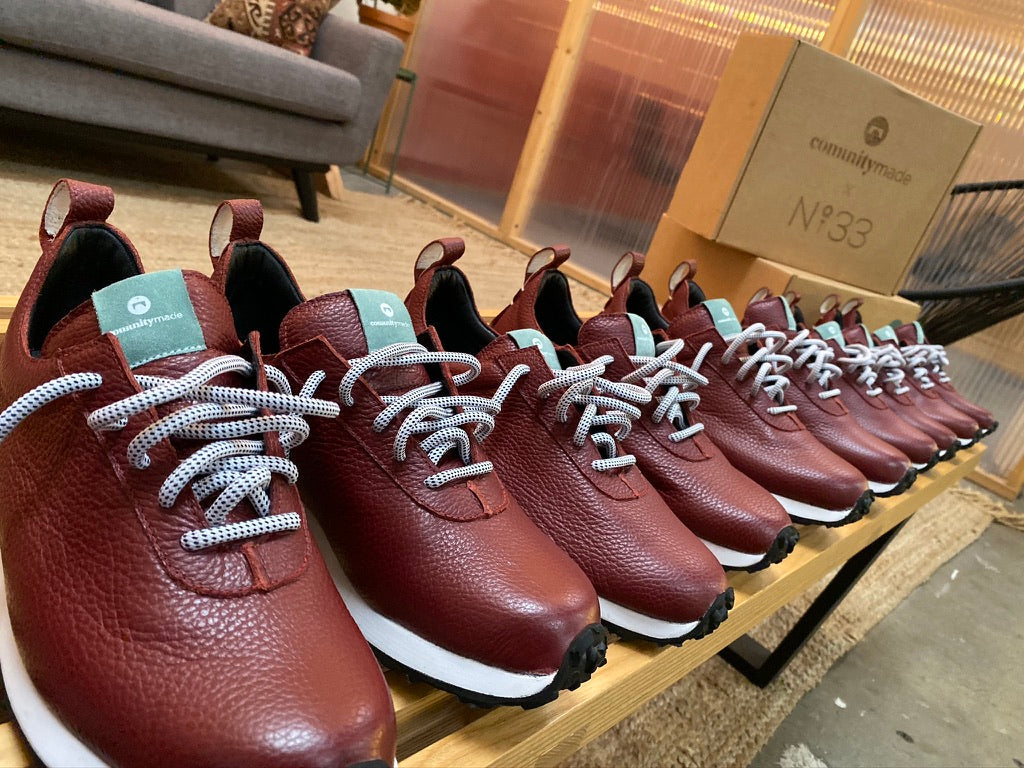
Shoes have evolved significantly over the centuries, reflecting a variety of cultural, social, and technological advancements. From essential leather wraps to high-tech running shoes, footwear has continually adapted to meet society's needs and tastes.
Read on to explore the fascinating journey of shoe styles through different eras, examine the factors driving these changes, and look ahead to what the future holds for footwear.
Early Footwear: From Otzi the Iceman to the Middle Ages
The history of shoes dates back to prehistoric times. Otzi the Iceman, a well-preserved natural mummy from around 3300 BC, was discovered wearing primitive leather shoes stuffed with grass. These early shoes were designed to protect their feet from harsh conditions.

These shoes were unique. The soles were made from bear leather, treated with a blend of the bear's brains and liver fat. The upper part was crafted from deer leather. A woven mesh of linden bark held everything together. The bindings were made from calf leather. Straw provided insulation, and the lining was made from soft moss.
In the Middle Ages, footwear began to diversify. Both men and women wore leather shoes, but styles varied significantly by region and class. Pointed toes, known as Crakows, became popular among the nobility, symbolizing status and wealth. They were stuffed with moss to maintain their shape and prevent them from flopping around.
The Renaissance to the 19th Century: A Flourish of Styles
The Renaissance shoes had a flat, wide tip that was slightly pointed or roundish. Platform shoes or chopines first appeared in the Ottoman Empire and became popular among women in classy societies, particularly in the Republic of Venice. These shoes were as high as 20 centimeters to 30 cm, making walking quite difficult.
The chopines helped protect expensive dresses from touching the streets where they could get dirty. By the 18th century, stiletto heels were introduced, though they were much more practical than today's sky-high versions.
As we entered the 19th century, the Industrial Revolution brought about significant changes in shoe design. The invention of the sewing machine allowed for mass production, making footwear more accessible.
Rubber vulcanization also began around this time, encouraging the use of rubber straps rather than lacing. This advancement resulted in the development of sports shoes, flip-flops, high-heeled ankle boots (for women), and low shoes (for men).
The 20th Century: Innovation and Diversity
The 20th century saw rapid evolution in shoe styles, driven by technological advances and changing social norms.

1920s-1940s: Glamour and Practicality
The early 20th century saw the rise of glamorous high heels and practical dress shoes. Women's fashion in the 1920s embraced the flapper style, with shoes becoming more decorative. By the 1940s, WWII necessitated more practical designs, leading to the popularity of durable leather shoes.
The wedge shoe became famous among women in the 1940s. Its heel is medium-height, and the sole is thick. Wedge shoes are both formal and casual footwear, and they can be combined with laces, ankle straps, slingback straps, or peep-toe holes.
The wedge was designed from fabric-covered wood, and formal wedge shoes were made of suede or black patent leather.
1950s-1970s: Cultural Shifts and New Materials
The post-war era brought a wave of new materials and designs. The 1950s introduced the iconic stiletto heels, symbolizing femininity and sophistication. The 1960s and 1970s saw a cultural shift towards casual styles. Thanks to innovations in shoe design and materials, running shoes emerged as a staple for athletic and everyday wear.
1980s-1990s: Technological Advancements
Significant technological advancements in the footwear industry marked the late 20th century. Nike and Adidas revolutionized running shoes with new cushioning technologies and ergonomic designs. High heels and dress shoes also improved comfort and style, catering to a more fashion-conscious consumer base.
The 21st Century: Sustainable and Smart Footwear
In the 21st century, the focus has shifted towards sustainability and smart technology in shoe design.
Eco-Friendly Trends
With growing environmental awareness, many companies are now prioritizing eco-friendly production methods. COMUNITYmade is a prime example of this trend. Founders Shannon and Sean Scott, leveraging their experience from major brands like Asics, Vans, and Toms, established a company that embodies modern values. Their commitment to American-made quality craftsmanship ensures stylish and functional footwear and sustainable practices.

Smart Shoes
The integration of technology into footwear has given rise to smart shoes. These innovations include fitness tracking, self-lacing mechanisms, and adaptive fit technologies. Brands are continually exploring ways to enhance functionality and user experience through technological advancements.
The Future of Footwear
The future of footwear is poised to bring even more exciting developments. Here are a few trends to watch:
Advanced Materials
Research into advanced materials, such as biodegradable and recyclable options, will likely grow. These materials could minimize the environmental impact of shoe production and disposal.
Customization
Advancements in 3D printing and AI are making customized shoes more accessible. 3D printing allows for customization that considers a person's unique foot shape and walking style.
Conversely, AI algorithms can assess someone's gait, pressure points, and weight distribution, leading the tech to help suggest the ideal shoe design and material.
Health and Performance
Future shoe designs will increasingly focus on health and performance. Innovations may include smart insoles that monitor foot health and provide real-time feedback to prevent injuries and enhance athletic performance.
COMUNITYmade: Bridging Tradition and Innovation
COMUNITYmade stands out as a brand that effectively bridges the gap between tradition and innovation. Shannon and Sean Scott's extensive experience in the footwear industry has allowed them to create a company that prioritizes style and sustainability. Their shoes are made from high-quality materials and designed to support local manufacturing and eco-friendly practices.
Sustainable Practices
COMUNITYmade is committed to reducing its environmental footprint. It uses sustainable materials and processes in its production, ensuring its shoes are as eco-friendly as possible. This commitment extends to its packaging, which is designed to minimize waste.
Community Impact
The company's name, COMUNITYmade, reflects its dedication to positively impacting the community. A portion of their profits is reinvested into local initiatives, supporting social causes and fostering community development.
Stylish and Functional Design
Despite its strong focus on sustainability, COMUNITYmade does not compromise on style or functionality. Their footwear is designed to be both aesthetically pleasing and highly functional, catering to the needs of modern consumers.
Conclusion
The evolution of shoe styles over the decades is a testament to the dynamic interplay between culture, technology, and societal needs. From the practical leather shoes of Otzi the Iceman to the high-tech running shoes of today, footwear has continually adapted to the times.
COMUNITYmade exemplifies the modern goals of eco-friendly production and quality craftsmanship. By combining their industry experience with a commitment to sustainability, Shannon and Sean Scott have created a brand that offers great-looking and functional footwear that impacts the environment and community positively.
Check out our shoe collection to find the right shoes for your needs.

